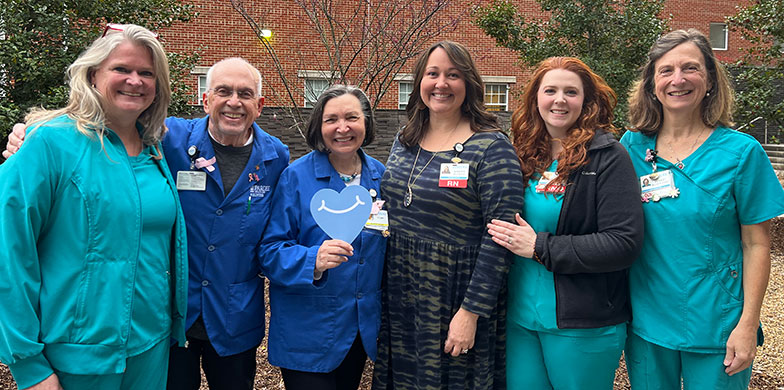Lung cancer is the number one cause of cancer-related death in both men and women. According to the American Cancer Society, smoking causes one in five deaths each year. The number one way you can reduce your risk of lung cancer is to quit smoking cigarettes, cigars and pipes if you are a smoker and to avoid secondhand smoke.
While not all cases of lung cancer can be prevented – some people are predisposed to the disease because of family history and other factors – not smoking and avoiding secondhand smoke greatly reduces your chances of lung cancer.
Lung cancer prevention
Experts believe 80 percent of lung cancers are caused by smoking. While it is difficult to quit smoking, doing so can save your life and the lives of those around you who are exposed to your secondhand smoke. November 15 is the American Cancer Society’s Great American Smokeout, a day when people all over the country commit to stop smoking. If you currently smoke, consider making this the month you quit.
The sooner you stop smoking, the more you reduce your risk of lung cancer and other health problems. Not only will quitting benefit your health, it will also improve your quality of life so you can enjoy time with family and friends for years to come.
Talk to your doctor to get help quitting. He or she can recommend strategies and even medications to help you stop smoking for good.
Catching lung cancer in its early stages
Lung cancer often doesn’t cause symptoms until the disease is too advanced to cure. Previously, there were no screening options to detect lung cancer in its early stages. Fortunately, there is now a low-dose CT lung scan for patients at high risk for lung cancer.
During this screening, the radiologist uses a low-dose CT scan to get detailed images of the lungs. It helps doctors see and detect lung tumors better than a traditional X-ray does. While the CT scan does expose the patient to some radiation, it is at a much lower dosage than a traditional CT scan.
As with any screening, there are risks and benefits. Not everyone is a candidate for a low-dose CT scan for lung cancer. Studies have shown it is most beneficial for patients at high risk of developing lung cancer.
People considered high-risk are those ages 55 to 77 who have a smoking history equivalent to a pack of cigarettes every day for 30 years, and who either currently smoke or have quit within the last 15 years.
The Centers for Medicare and Medicaid Services will reimburse eligible candidates for a screening once a year. Some private insurers also cover the test. If you have ever smoked, ask your primary care doctor if you are a candidate for a low-dose CT lung scan.
To find a doctor near you, visit pardeehospital.org.




